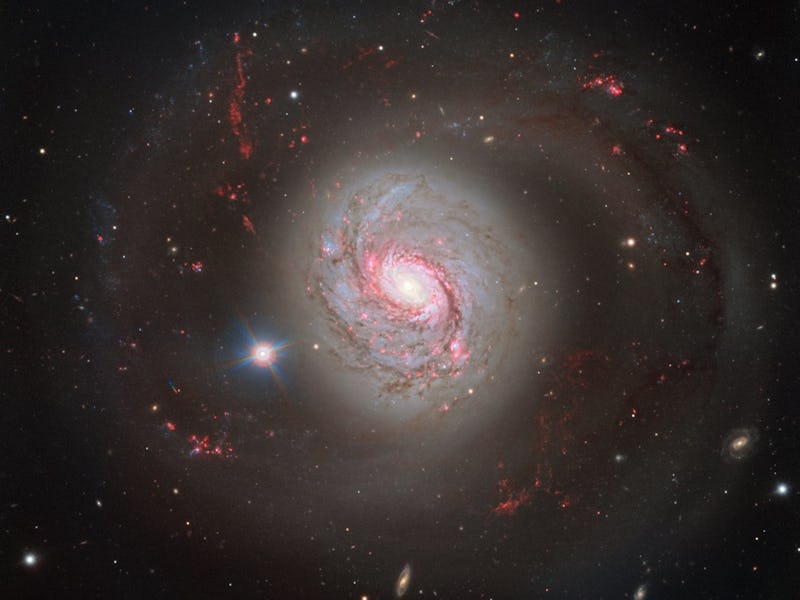
Some galaxies are exceptionally turbulent, spiraling star metropolises. This is Messier 77, one of 110 radiant objects cataloged by French astronomer Charles Messier in the 1700s, and it churns out abnormal amounts of light. On Wednesday, the European Southern Observatory released a face-on view of the galaxy, which it obtained with its Very Large Telescope array, located in the high plains of the bone-dry Atacama Desert in Chile.
Located 47 light-years from Earth, Messier 77 is among the universe’s known “active galaxies,” and conditions in their central engine are thought to combust into massive quantities of nearly every type of radiation — radio waves, deathly galactic cosmic rays, and, not least, bright doses of visible light.
Like nearly every galaxy, Messier 77 is believed to host a black hole in its center that we can’t see, because it sucks in the surrounding light. Scientists suspect that Messier 77’s center looks blindingly white because a disk of material gets sucked near the galactic core by the black hole’s indomitable gravitational pull but doesn’t get close enough to be gulped up. Instead, more masses of dust, gas, and space rocks continue to slam into each other at the galaxy’s core, becoming super condensed and surrounding the black hole. With this pressure, says the European Southern Observatory, comes an “incredible” amount of heat that is then unleashed into the universe, so much so that Charles Messier could see this distant galaxy with rudimentary 18th-century telescopes.
In this shot, the Very Large Telescope captured light in different wavelengths. The hot pink color shows the light emanating from the hottest, burning, younger stars, which are forming in the galaxy’s spiral arms. The radiant object to the left of the galaxy is an interloper from our own Milky Way galaxy, a star that just happened to have been in the shot.